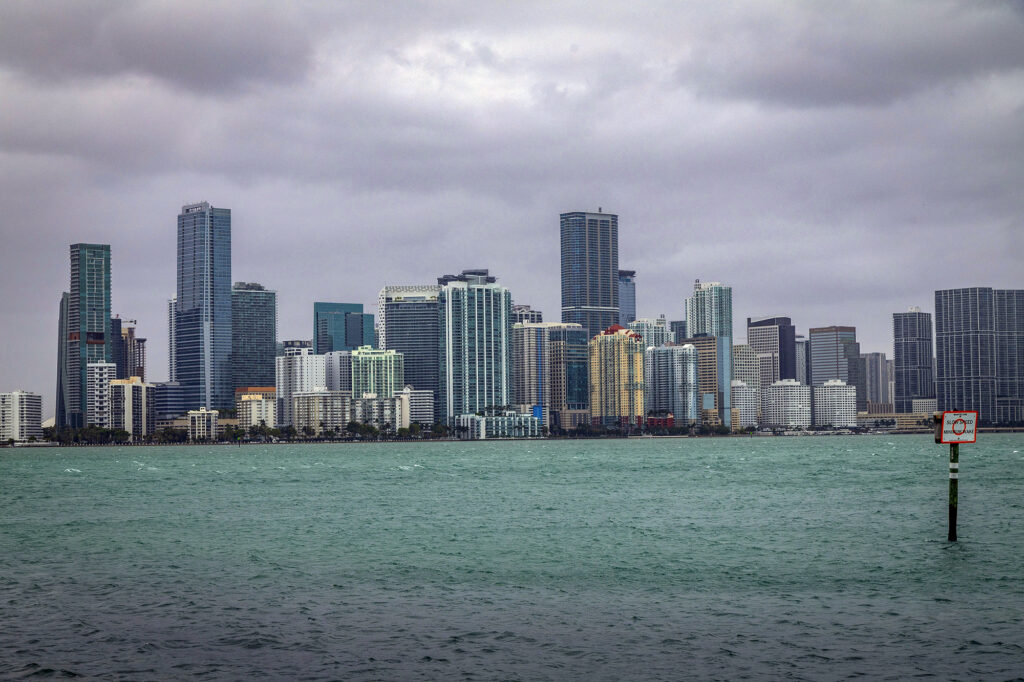Immigration powered population gains in the United States for a second year in a row and — coupled with a drop in the number of deaths from the depths of the COVID-19 pandemic — caused an uptick in the U.S. growth rate in 2023, according to estimates released Tuesday by the U.S. Census Bureau. The United States added 1.6 million people, more than two-thirds of which came from international migration, bringing the nation’s population total to 334.9 million people. Population gains or losses come from births outpacing deaths, or vice versa, along with migration.
Quick Read
- Immigration Drives U.S. Population Growth: The U.S. saw a population increase of 1.6 million in 2023, largely driven by international migration, which contributed two-thirds of this growth, bringing the total population to approximately 334.9 million.
- Immigration Trends: The number of immigrants surged to 1.1 million in 2023, the highest in over two decades. This rebound in immigration follows a decline in the latter half of the previous decade and a further drop during the pandemic.
- Future Population Projections: Immigration is projected to be the primary source of U.S. population growth in the future, especially as natural increase (births minus deaths) is expected to decline, with deaths outpacing births by the late 2030s.
- 2023 Growth Rate: The growth rate in 2023 was around half a percent, a slight increase from the previous year, and the largest population gain since 2018. This was aided by approximately 300,000 fewer deaths compared to the previous year.
- Regional Growth: The South experienced the majority of the U.S. population growth, accounting for 87% of the total increase. States like South Carolina and Florida saw significant growth, largely due to domestic and international migration.
- State-Specific Trends: South Carolina had the highest growth rate at 1.7%, while Florida had the second-highest at 1.6% and the largest number of new residents. New York experienced the most significant population decline, both in rate and absolute numbers.
- State Populations: California remained the most populous state despite losing over 75,000 residents, while Texas was second with over 30.5 million residents. Georgia’s population surpassed 11 million for the first time, joining seven other states with populations above this mark.
The Associated Press has the story:
Immigration & declines in death cause uptick in US population growth this year
Newslooks- ORLANDO, Fla. (AP)
Immigration powered population gains in the United States for a second year in a row and — coupled with a drop in the number of deaths from the depths of the COVID-19 pandemic — caused an uptick in the U.S. growth rate in 2023, according to estimates released Tuesday by the U.S. Census Bureau.
The United States added 1.6 million people, more than two-thirds of which came from international migration, bringing the nation’s population total to 334.9 million people. Population gains or losses come from births outpacing deaths, or vice versa, along with migration.
After immigration declined in the latter half of last decade and dropped even lower amid pandemic restrictions at the start of this decade, the number of immigrants last year bounced back to almost 1 million people. The trend continued this year, growing to 1.1 million people, the highest number of immigrants in more than two decades, according to Census Bureau figures compiled by William Frey, a demographer at The Brookings Institution.
It is a sign of things to come in this century, as the U.S. population is projected to decline without immigration since deaths will be outpacing births by the late 2030s.
“The immigration piece is going to be the main source of growth in the future,” Frey said.

While low by historical standards, 2023’s half-percent growth rate was a slight uptick from the 0.4% rate last year and the less than 0.2% increase in 2021.
There were about 300,000 fewer deaths this year compared with a year earlier. That helped double the natural increase to more than 500,000 people in 2023, contributing to the largest U.S. population gain since 2018, according to estimates that measure change from mid-2022 to mid-2023.
The vast majority of growth, 87%, came from the South, a region the Census Bureau defines as stretching from Texas to Maryland and Delaware.
South Carolina’s 1.7% growth rate topped all other states, and its population rose by more than 90,000 residents. More than 90% of the growth came from domestic migration, or people moving from another U.S. state to South Carolina. Without domestic and international migration, the Palmetto State would have lost population in 2023 with almost 1,300 more deaths than births.

Florida had the next-highest growth rate at 1.6%, adding more than 365,000 residents. That was also the second-highest growth in terms of raw numbers. Only Texas surpassed it, gaining more than 473,000 people. More people moved to Florida than any other’s U.S. state this year, with the almost 373,000 movers about evenly split between domestic and international. Significantly fewer residents died in Florida compared to last year, leading to a natural decrease of only around 7,600 people.
Of the 50 states, New York had the biggest rate of population decline, losing 0.5%. It also recorded the largest decline in pure numbers, with a drop of almost 102,000 residents, although it marks a much smaller decline than last year’s 180,000-person drop. The almost 74,000 international arrivals and the state’s natural increase of more than 41,000 residents couldn’t offset the almost 217,000 New Yorkers who departed the state from mid-2022 to mid-2023.
California was still the nation’s most populous state, with 38.9 million residents, though it lost more than 75,000 residents this year. The decline was an improvement from the more than 113,000-person drop last year. Texas was the second most populous state with 30.5 million residents.
For the first time, Georgia surpassed 11 million people in 2023, joining only seven other states above that population threshold.







